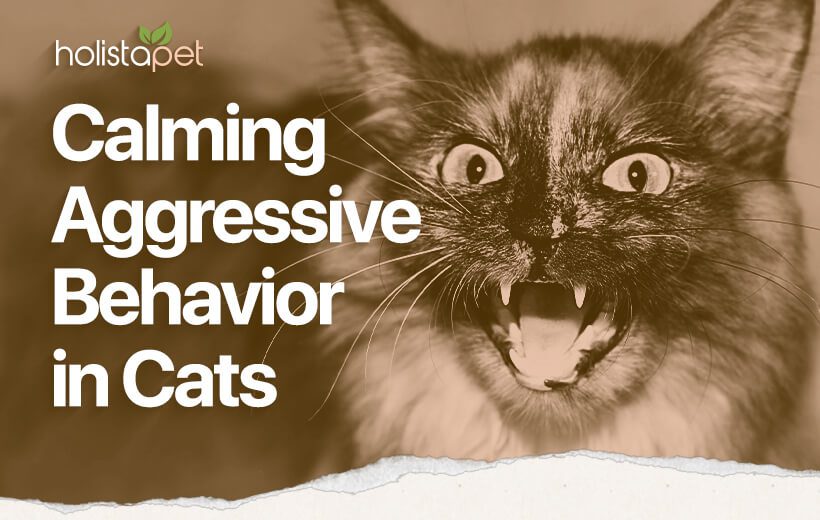
How to calm an aggressive cat How to calm a cat with aggressive behavior
Many cat lovers often wonder how to calm a cat in case of aggression. It should be understood that in most cases, anger in cats is a product of fear, and aggressive behavior is a manifestation of the self-defense of the animal. If you put a cat or a cat in a situation that will frighten him, then the animal will be angry and show aggression.
Today we will find out how to calm an aggressive cat and how to identify the reason for such behavior in your animal so that such situations are minimized.
Contents
How to identify the cause of anger in a cat
Do not forget that a cat is not a dog, which is one hundred percent a pet. In cats left wild instincts, which tell them that anything can be a danger, even a person. So, cats can show fear and become angry in such situations:
- the child pulled the cat by the tail and the animal, in turn, begins to associate it with an object that can cause pain, and therefore shows hostility towards it;
- a cat poorly adapted to the hearth will be afraid of everything around, which, accordingly, will be expressed in manifestations of aggression.
To understand when to expect aggressive actions from a cat, pay attention to body language. Some gestures directly indicate that your cat is about to attack either you or your children and relatives. Be especially careful when you see the following manifestations:
- the fur stood on end;
- pupils dilated;
- the cat looks directly at you or at a potential victim;
- or avoids eye contact;
- mustache pressed;
- the cat’s ears are pressed to the head;
- the posture of the animal is crooked;
- the cat growls, hisses, starts grinning.
Every time your cat shows aggression, think about the reason such behavior in the current situation. Perhaps he is frightened either by your actions, or by the presence of strangers in the house who seemed suspicious to him and the animal believes that they can harm him or you.
Aggression from affection
Learn to distinguish between fear and anger can be caused even by your caresses. You never know when a cat will happily purr in response to strokes, and when she doesn’t like it and wants to pounce on you. If during petting you see that the animal becomes aggressive, then the reason may be as follows:
- the cat thus wants to show that she has had enough;
- from pleasure, the cat first falls asleep, and then suddenly wakes up and may be frightened by your strokes;
- sometimes this behavior is typical for kittens that did not communicate with their own kind or were the only ones in the litter. Don’t hit them back, just stop in time.
How to calm a cat
calm the cat with active aggression against you, you can do it in such ways that it does not harm you:
- put on protective clothing and take the animal in your arms, quickly wrap it in a blanket;
- Always have a water spray with you so that you can spray some water in the direction of the animal in case of aggressive behavior. So you protect yourself from possible consequences;
- do not tease or provoke the animal if you see imminent aggression or after the first attack attempt.
Also, to restrain the sharp behavior of the animal, one should take the following actions:
- step back from the cat, you may need to leave the room for at least 10 minutes so that it “burns out”;
- if the cause of aggression is another cat or animal, then they should be isolated from each other for some time and introduced gradually;
- sit down and do not make eye contact with the cat during the irritation period, this will only increase her fear. You can lay down on the floor. So you will seem shorter to the cat and this will calm her down;
- do not pay attention to the cat for a while so that he understands that you do not pose any threat to him;
- make places for the cat to hide – sometimes it helps to calm the negativity for the animal to stay in a safe haven for a while. If the cat is scared and at the same time there is nowhere to run, aggression will only intensify;
- approach the cat slowly and carefully, avoiding touching;
- or let him come to you himself, so that the cat is convinced that you are open to communication and do not want to hurt him. Let him sniff you, rub his head, so the animal will quickly understand that you are not as scary as it seems to him;
- feed the cat or give water;
- do not resort to punishment, otherwise attacks of aggression will be more frequent.
If the cause of aggression is pain
In some cases, the reason for the sharp behavior of cats is pain. So, if before that your pet was affectionate and friendly, and then suddenly became aggressive, this may indicate that he is sick with something. To find out, take your cat to the vet.
Common pain syndromes that provoke anger are:
- pain in the teeth;
- heat;
- inflammation;
- mornings;
- trauma;
- stretching;
- ear problems;
- problems with the digestive system.
If the doctor concludes that the cat has no health problems, then you can calm the cat with sedativeif other means fail.
Sometimes cats show aggression towards something specific: people or objects. In such cases, you need to gradually accustom the animal to this and in every possible way make it clear that neither your friends nor children’s dolls pose a danger to him. Gradually expand the cat’s contact with that person or object, but don’t do it abruptly.
Different cats have different degrees of socialization, so for someone to adapt to a certain environment, a few days will be enough, and for someone, even a year will not be enough.
Helpful hints and warnings
Frequent aggression and anger and cats can be provoked by various reasons that you cannot guess right off the bat. We bring you tips and advice on this topic, which may help you unravel the cause of your pet’s inappropriate behavior:
- sometimes aggression decreases after castration or sterilization of animals. If you do not plan to breed them in the future, think about it;
- if your cat reacts inappropriately to a neighbor’s cat or dog, arrange with the neighbors so that the time of their walks does not coincide;
- anger and a sense of fear overcome the cat when changing furniture, rearranging or moving;
- if you left and left the cat in the care of someone, then, most likely, her first reaction to your appearance will be aggression;
- sometimes too plump cats show dissatisfaction due to the fact that they cannot get rid of fleas. Everything is decided by a visit to the veterinarian;
- so that two cats in the house stop fighting, set places for their feeding in different places of the room;
- most cats do not take delight in the need to go to the same tray with another cat or cat. They can be taught to go to the same tray, but it will be much easier to get one for each.
So, we understood one thing: you can’t respond to a cat’s aggression with aggression, everything needs to be resolved peacefully, to make it clear to the animal that no one wants to offend him and in this house everyone is happy for him. If he understands this, then he will forever change the attitude towards you and your guests who were afraid to come to you because of an evil cat or a cat.





